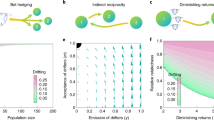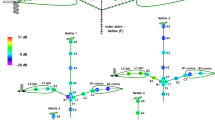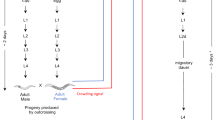Abstract
MOTHS of the neotropical Saturnioid family Hemileucidae perform a special movement on assuming the resting position from any preceding activity, which has been termed ‘rocking’1. It is rigidly co-ordinated, and consists of fast, rhythmic side-to-side oscillations of the entire animal. This movement is unique to the Hemileucidae, and appears to be a highly conservative character within that family, for it occurs in all species so far examined, irrespective of either size or mode of protective coloration2. Its function, if any, is unknown, but it is not concerned with the sexual responses of either sex, nor do the moths possess any known non-sexual social behaviour. The strength of this response may be scored as the number of complete oscillations performed; an analysis has shown that the strength of rocking executed by unconstrained moths of the Brazilian species Automeris aurantiaca Weym. is related to the nature of the sequence of acts preceding it1.
This is a preview of subscription content, access via your institution
Access options
Subscribe to this journal
Receive 51 print issues and online access
$199.00 per year
only $3.90 per issue
Buy this article
- Purchase on SpringerLink
- Instant access to full article PDF
Prices may be subject to local taxes which are calculated during checkout
Similar content being viewed by others
References
Bastock, M., and Blest, A. D., Behaviour, 12, 243 (1958).
Blest, A. D., Behaviour, 11, 257 (1957).
Weis-Fogh, T., Phil. Trans. Roy. Soc., B, 239, 553 (1956). Fraenkel, G., Z. vergl. Physiol., 16, 371 (1932).
Ribbands, R., “Behaviour and Social Life of Honeybees” (London, 1953).
Dethier, V. G., Science, 125, 331 (1957).
Kennedy, J. S., Proc. 10th Internat. Ent. Congr. (1958). Precht, H., Z. Tierpsychol., 9, 207 (1952).
Steche, W., Insectes Sociaux, 4, 305 (1957).
Haldane, J. B. S., and Spurway, H., Insectes Sociaux, 1, 247 (1954).
Frisch, K. von, “The Dancing Bees” (London, 1953).
Author information
Authors and Affiliations
Rights and permissions
About this article
Cite this article
BLEST, A. Interaction between Consecutive Responses in a Hemileucid Moth, and the Evolution of Insect Communication. Nature 181, 1077–1078 (1958). https://doi.org/10.1038/1811077a0
Issue date:
DOI: https://doi.org/10.1038/1811077a0



